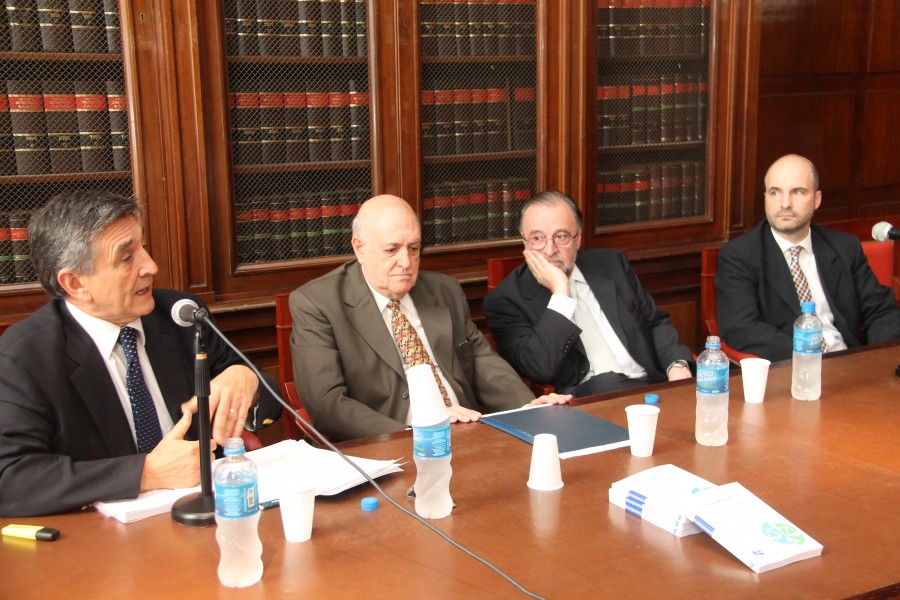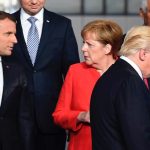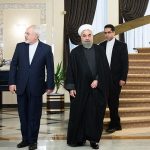by Mike LaSusa
Nearly a quarter-century after a bomb blast at a Buenos Aires Jewish community center killed dozens and injured hundreds more, the worst terrorist attack in Argentina’s history remains unsolved—and a new memoir recounts one lawyer’s efforts to prove the government’s investigation was a sham from the start.
The 1994 bombing of the Argentine Jewish Mutual Association, known by its Spanish acronym AMIA, is widely thought to have been carried out by the militant group Hezbollah at the direction of the Iranian government.
But Alberto Zuppi, an Argentine attorney who represented victims of the attack, lays out a compelling case that the official inquiry that led to this conclusion was little more than a cover-up.
“They had decided it in advance: the AMIA case was not going anywhere,” Zuppi writes in his memoir, AMIA: An Ongoing Crime.
The official investigation accused top Iranian officials of being the masterminds of the bombing plot, a narrative the United States promoted as part of a broader campaign to paint Iran as a sponsor of international terrorism.
But Zuppi argues that the AMIA probe was deliberately manipulated to avoid uncovering the true perpetrators of the attack. As tensions between Iran and the United States continue to escalate, his account serves as a reminder that this key pillar of anti-Iran messaging rests on a shaky foundation.
Sifting Rubble
Zuppi cut his teeth during the late 1980s and early 1990s working on judicial proceedings against Nazi war criminals hiding out in Argentina. That experience brought him into contact with Memoria Activa, a group for AMIA survivors and victims’ friends and relatives.
Zuppi writes that members of Memoria Activa had become disillusioned with the efforts of attorneys hired by AMIA and its parent organization—the Delegation of Argentine Jewish Associations (DAIA)—to conduct independent probes of the attack.
The group felt that the AMIA and DAIA lawyers were too credulous of the official investigation. And once Zuppi agreed to take the case, he discovered that they had plenty of reason for suspicion.
For one, the collection and retention of physical evidence from the bombing scene had been haphazard. “Pieces of the AMIA building appeared on the streets of Buenos Aires, sold as souvenirs,” Zuppi writes.
Eventually, a court ordered mounds of physical evidence collected along the shores of the Rio de la Plata to be pushed into the river—an act Zuppi calls “a horrific display of stupidity, inhumanity and indifference.”
The handling of individuals’ testimony was just as questionable. Several important witnesses weren’t initially interviewed, and a recording emerged that showed the judge in charge of the investigation, Juan José Galeano, offering a $400,000 bribe to a key figure in the case.
Seeking Justice
The deeper Zuppi dug, the more he doubted the government’s efforts. There was a mismatch between the substantial resources dedicated to the AMIA probe and the minimal progress it had achieved. After several years of investigation, little was known about the bombing beyond the basic facts that had surfaced in the days after the attack.
“It was clear that Galeano and the government did not intend to perform a true investigation,” Zuppi writes. “They were simply collecting data with neither sense nor intention.”
In 1999, working with other non-profit groups, Zuppi presented a complaint to the Inter-American Commission on Human Rights on behalf of Memoria Activa members, arguing that “Argentina had failed in its duty of preventing, investigating, and then punishing the perpetrators of the attack.”
Over the next several years, Zuppi and fellow attorney Pablo Jacoby picked apart every flaw they could find in the official investigation of the AMIA attack. In 2005, they notched an important victory when the Argentine government publicly admitted fault in its handling of the case.
Moreover, several important figures in the AMIA case—including Judge Galeano, the president at the time of the bombing, Carlos Menem, and the then-head of the national intelligence agency, Hugo Anzorreguy—were eventually charged in Argentina with conspiring to derail the investigation. Their trials are ongoing.
Closure Elusive
It’s one thing to prove the Argentine government’s handling of the AMIA case was deeply flawed, but as Zuppi notes, it’s another thing entirely to determine who actually perpetrated the attack.
Although Zuppi insists that all reasonable hypotheses should be considered in the AMIA case, he criticizes the amount of attention given to the theory that Iran was responsible for the bombing.
“The Iran theory was set up from day one,” he told me.
Zuppi says the focus on Iran overshadowed strong evidence pointing to the involvement of elements of the Syrian government. And, he says, there may have been political motivations for not pursuing the latter investigative avenue.
“The governments of Israel and Argentina agreed on an ‘official version’ that wouldn’t put at risk the peace negotiations that Israel was holding with Syria,” the attorney told me.
Additionally, placing the blame on Iran also served the interests of Argentina’s close ally, the United States, which used allegations of Iranian support for terrorist groups to justify efforts to curtail Tehran’s development of nuclear technologies.
Zuppi also thinks that the Argentine officials in charge of the investigation had little interest in pursuing the Syria angle because of President Menem’s familial and political connections to the country.
For example, Zuppi points to the lack of scrutiny given to Alberto Jacinto Kanoore Edul, a businessman of Syrian heritage residing in Argentina who had ties to both Menem and the international arms trafficker Monzer al Kassar.
Telephone intercepts show that days before the AMIA attack, Kanoore Edul had contacted the Lebanese-Argentine owner of the “chop shop” that allegedly supplied the vehicle used in the bombing.
Zuppi writes that when he sought to subpoena Kanoore Edul, Judge Galeano denied the request. Further inquiries into the Syrian angle were similarly stymied.
“There are many elements of proof of the Syrian connection, and every time I asked for something, I was denied,” Zuppi told me.
“I’m not saying the Iran theory shouldn’t be investigated,” he added. “But it should be done seriously, as should the Syrian and Lebanese angles.”
Ongoing Implications
Although the AMIA attack took place nearly 25 years ago, its reverberations can still be felt today, even outside of Argentina.
President Donald Trump has significantly ramped up tensions with Iran, tearing up an Obama-era deal aimed at containing Tehran’s nuclear program and repeatedly issuing menacing statements against the country. And hawkish policy types in Washington have pressured Trump to add the AMIA attack to the rhetorical arsenal deployed in support of his administration’s anti-Iran agenda.
Despite the demonstrated flaws in the Argentine investigation of the bombing, the theory of Iran’s culpability still goes largely unchallenged. Indeed, just a few weeks ago at the United Nations General Assembly, Argentine President Mauricio Macri called on Iran to assist in the ongoing investigation of the bombing. (Iran responded by denying involvement, as it has from the beginning.)
Zuppi, however, believes that there’s still a chance to uncover the truth about the AMIA attack.
“There’s a lot still to find out and there will be documentation somewhere,” he said.
Mike LaSusa is an independent journalist and researcher. He focuses on foreign policy, national security, and human rights issues in the Americas. Twitter: @mikelasusa






Well, that is an interesting angle. It is a bit like so many of the “crimes” committed by Russia which after a certain time are found-surprise, surprise and too late- to have NOT been caused by Russia.
The leading analysis of the AMIA bombing was written by Gareth Porter 5 years ago, and published by IPS. Too much to repeat or summarize, but MEK did it, both the bombing and the false blaming of Iran. Links are not allowed here, but you can easily find Porter’s article.
What possible motive would Iran, Syria, MEK or indeed any outside actor have to bomb a Jewish community centre in Argentina? Surely it must have been a local anti-semitic organisation.
is widely thought that is was done by….! WTF? Another LIES bi Bog Nose Bibi and his clowns.